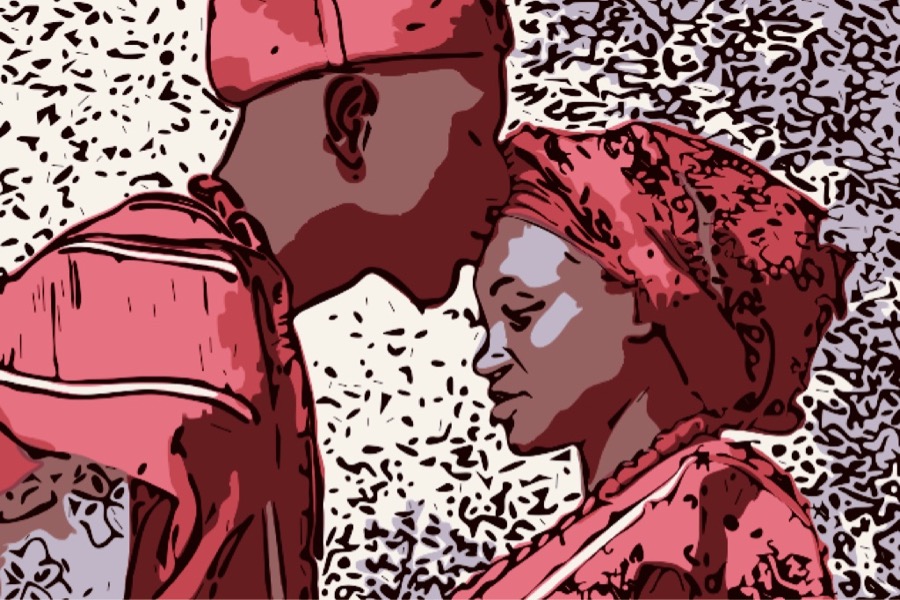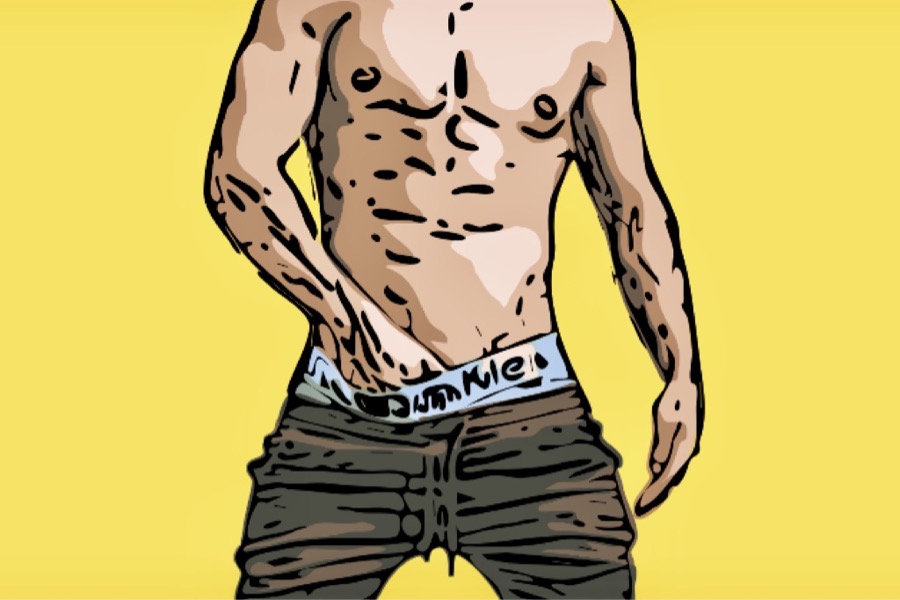Art as a means of expressing oneself, one’s essence, hesitation, and resistance. Art as a tool to get closer to others, to propose new visions, to make society more open, available to acceptance and listening, maybe even more tolerant. These are the ideals on which Alireza Shojaian’s work is based. The young Iranian artist, who in order to express himself freely had to escape the control and censorship of his country, explains to Il Grande Colibrì: “I’m a painter who had to leave his hometown to be able to continue what he loved to do: to be a queer artist and to be the voice of the voiceless through his art.”.
What are the reasons that drove you to art?
I don’t make art because of activism. I do art because I feel the need to create art as a form of open dialogue with the audience about queer culture. Perhaps it was the only media I had access to and with the censorship in the Middle Eastern countries, and especially in my hometown in Iran, was one of the few possible ways to talk about this subject which is considered taboo.

↑ Benjamin (2019) / ↗︎ Corps-à-corps (2017)
What social messages do you want to pass on to your audience?
Just showing the different aspects of queer culture to the people and raising awareness in all people so to make society more tolerant.
In your biography, you’ve said your intent, as an artist and as a man, is that of fighting society’s inherent prejudice while making space for “non-heteronormative masculine identities.” In your opinion, what are the critical elements that are still impeding so many people to express themselves and who they really are?
Living in a society which doesn’t give much space to live our real identity and the ongoing denial of our governments about our existence can be the biggest issue for us as Middle Eastern queer. Many of us lose confidence and courage. Many have to live in exile just to be able to conduct the life that was taken away by governments and societies.

↑ The perfect moment (2017) / ↗︎ WIND – The things that shift, evolve, and challenge (2018)
Non-binary artist Khansa has often been one of your models. Were you aware of what non-binary was before meeting them? Has dealing with non-binary changed your way to approach gender expression?
I’ve never looked at Khansa as belonging to any category. We collaborated often in Beirut because we both could see a certain beauty and we wanted to show that to everyone. I strongly believe this beauty and emotion in the queer culture was always hidden from society and showing it through art could be the key to raise tolerance and to give some room to non-heteronormative identities.
In an article on My Kali, you spoke about your Beirut ARTLAB exhibition Sweet Blasphemy as the beginning and the end of a love story. You said: “This meeting led me to a love, but I had to kill it, so the exhibition was a funeral for that love.” This statement is really fascinating…
That exhibition was in collaboration with Khansa and as I mentioned before we could see a certain beauty and I was trying to show it to everyone. What I took from the book The Forty Rules of Love by Elif Shafak, for the statement of the exhibition, was an explanation of the meeting of Rumi and Shams which says: “I had experienced an exceptional beauty and learned what it was like to encounter infinity through two mirrors reflecting each other endlessly.”

Hamed Sinno et un de ses Frères (2017)
Your artworks are all beautiful, but there’s one which I especially like. Its name is Hamed Sinno et un de ses Frères (Hamed Sinno and one of his Brothers) and it’s referred to a particular moment for queer culture and history: in 2017 in Cairo, the police arrested some people who had waved the rainbow flag during a concert of Mashrou ‘Leila, the alternative rock group of which Sinno is the singer …
Today I am happy that Hamed accepted this collaboration. I did my part regarding this non written historical event and documented it through art. As I mentioned before, what happened to the people who were suffering might stay with them forever.
Unfortunately today [June 16; ed] I learned that Sarah Hijazi (one of the people who were arrested after the Mashrou’ Leila concert in Cairo and who was able to escape to Canada) ended her own life because the trauma haunted her. She was one of the many who are still suffering from the same story.
Nicole Zaramella
with the contribution of Barbara Burgio
©2020 Il Grande Colibrì
images: ©Alireza Shojaian
Read also:
“TranStyX Talks about Trans People in the Theaters of Tunis”
Samra Habib: islam e queerness hand in hand




